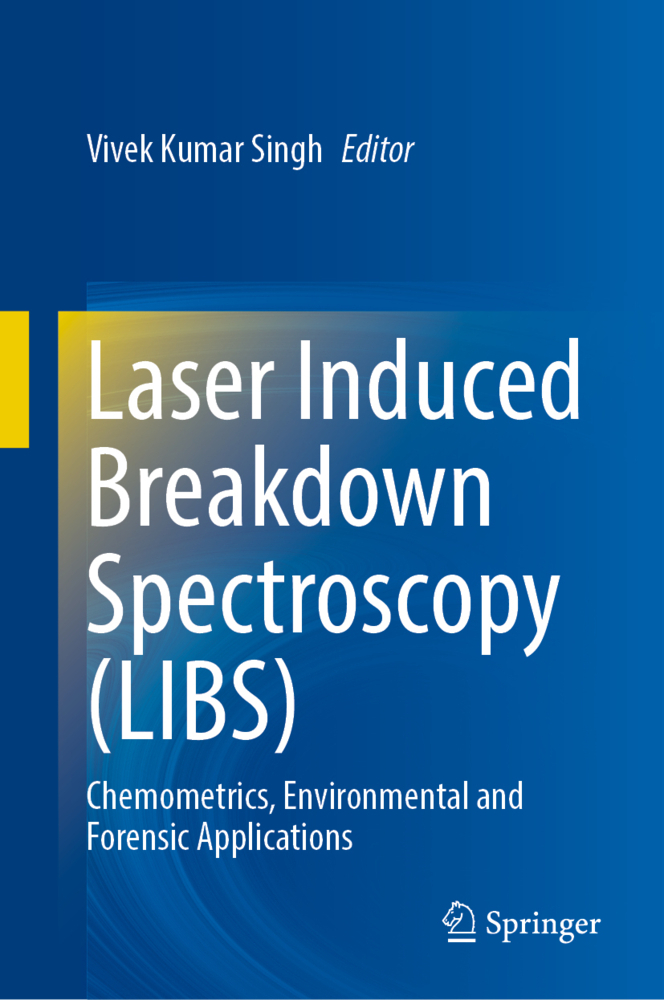
Zustellung: Mi, 18.06. - Di, 24.06.
Versand in 5 Wochen
VersandkostenfreiBestellen & in Filiale abholen:
This book provides a comprehensive overview of the latest applications of laser-induced breakdown spectroscopy (LIBS) in the environmental and forensic sciences along with chemometric methods. Environmental and forensic science increasingly requires multidisciplinary scientific methods, and LIBS has proven itself a more sensitive and user-friendly technology that can meet the demands of these fields. In addition, LIBS coupled with chemometric modeling approaches creates a powerful tool for detecting and quantitatively predicting the chemical composition of a variety of samples. As a result, this book consolidates essential developments in LIBS, data analysis using chemometrics, and breakthrough applications in environmental and forensic sciences. Beginning with an introduction of the principles of LIBS, the reader is then guided through field and sample-specific applications. An overview of LIBS-Raman instrumentation from basic to more advanced set-ups is also included. The analytical capabilities of the methods in terms of detection limits, accuracy, and precision of measurements for forensic and environmental samples is specifically covered. This book effectively translates the latest developments in algorithms for spectroscopic data and interpretation into these fields. Highlighting the utility of LIBS in environmental and forensic sciences, this book is an essential text for researchers well versed in the fields and as well as readers wanting to familiarize themselves with LIBS as a whole.
Inhaltsverzeichnis
Chapter 1: Fundamentals of Laser-Induced Breakdown Spectroscopy and Recent Developments. - Chapter 2: Spatiotemporal Dynamics of Femtosecond Filamentation. - Chapter 3: Tetrahertz Radiation Generation Via Laser-Plasma Interaction. - Chapter 4: Standoff-Laser Induced Breakdown Spectroscopy: Recent Developments and Instrumentation . - Chapter 5: Calibration-Free Laser-Induced Breakdown Spectroscopy: Towards Industrialization. - Chapter 6: Calibration-Free Laser-Induced Breakdown Spectroscopy (CF-LIBS): Capabilities, Limitations and Real-World Applications. - Chapter 7: Sampling Approaches and Optimization in Liquid LIBS Analysis for Environmental Applications. - Chapter 8: Signal Enhancement Techniques in LIBS-Based Experimentations. - Chapter 9: Microwave-Enhanced Laser-Induced Breakdown Spectroscopy. - Chapter 10: Machine Learning in the Context of Laser-Induced Breakdown Spectroscopy. - Chapter 11: Artificial Intelligence Techniques in LIBS Data Analysis and Interpretation. - Chapter 12: Data Processing, Shallow and Deep-Learning Models for LIBS: Basics, Applications and Tools. - Chapter 13: Beyond Peaks and Noise: The Power of Machine Learning in LIBS Analysis. - Chapter 14: Underwater Laser-Induced Breakdown Spectroscopy for Deep-Sea Application. - Chapter 15: LIBS Combined with Machine Learning in Geochemical and Environmental Resources Exploration. - Chapter 16: LIBS An Emerging Field-Portable Sensor Technology for real-time, in-situ Environmental Analysis. - Chapter 17: Chemometric Tools for the Fast Identification of Microplastics from Environmental Sources. - Chapter 18: Integrating LIBS and Machine Learning: A Dynamic Approach to Plastic Classification in Waste Recycling. - Chapter 19: Laser Induced Breakdown Spectroscopy (LIBS) Sensing for Environmental and Subsurface Monitoring. - Chapter 20: LIBS Application for Monitoring Airborne Particulate Matter and Atmospheric Pollution. - Chapter 21: Enhancement of LIBS Signal under Liquid using External Electric and Magnetic Fields. - Chapter 22: Laser-Induced Breakdown Spectroscopy in Forensic Sensing. - Chapter 23: LIBS Applications in Forensic Dentistry: Predictive Modeling for Sex and Age Determination from Human Tooth. - Chapter 24: Future Development in Laser Induced Breakdown Spectroscopy.
Produktdetails
Erscheinungsdatum
20. Juli 2025
Sprache
englisch
Seitenanzahl
590
Herausgegeben von
Vivek Kumar Singh
Verlag/Hersteller
Produktart
gebunden
Abbildungen
X, 590 p. 178 illus., 168 illus. in color.
ISBN
9783031909696
Entdecken Sie mehr
Bewertungen
0 Bewertungen
Es wurden noch keine Bewertungen abgegeben. Schreiben Sie die erste Bewertung zu "Laser Induced Breakdown Spectroscopy (LIBS)" und helfen Sie damit anderen bei der Kaufentscheidung.










